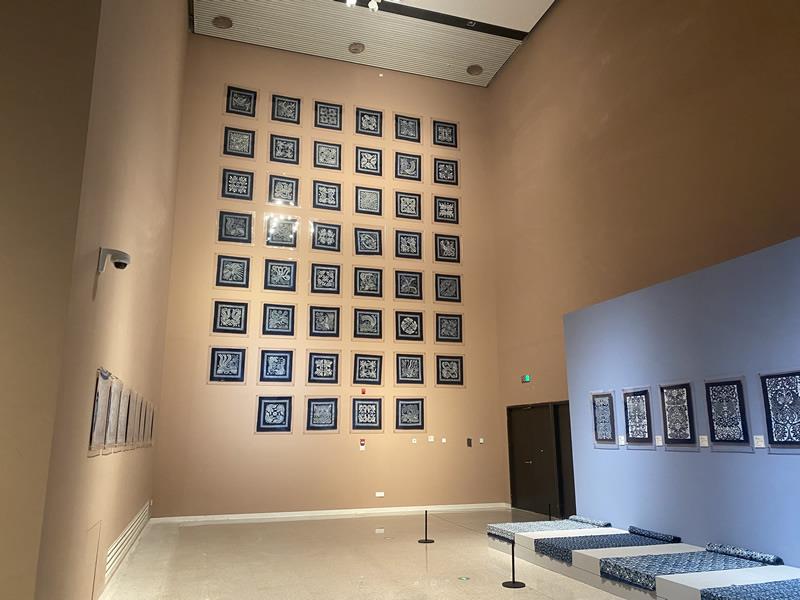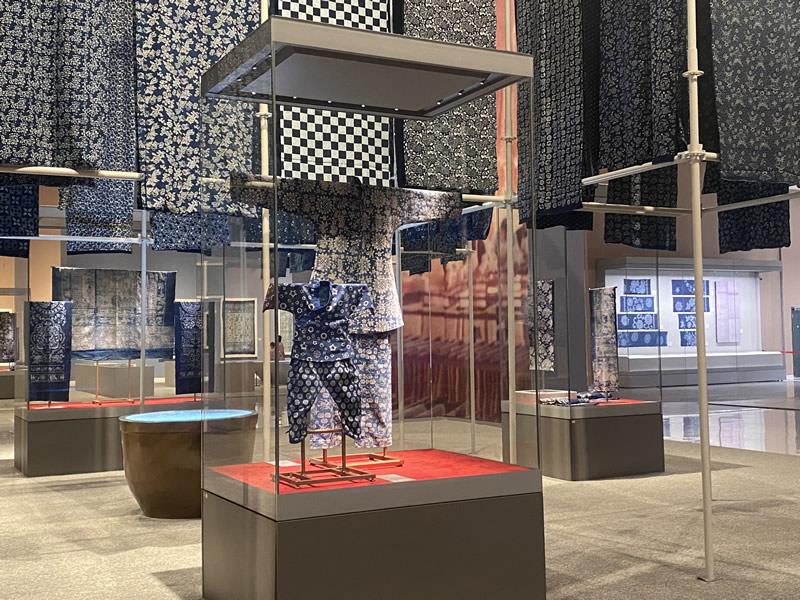Transcendence: Wu Yuanxin's Blue Calico Collection and Design Works
2023-07-25
The Transcendence: Wu Yuanxin's Blue Calico Collection and Design Works exhibition showcases Wu's collection and creations, offering insights into the historical origins, cultural aesthetics, diverse contexts, creative transformations and innovative developments of blue calico.
Wu is a Chinese arts and crafts master. He is among the first group of the representative inheritors of national intangible cultural heritage, and the curator of the Nantong Blue Calico Museum.
"Blue comes from the indigo plant, yet it is bluer than indigo." This quote from the Confucian classic Xunzi's Exhortation to Learning describes dyeing with bluegrass juice, expressing metaphorically the process of change, progression, transcendence and sublimation.
Bluegrass, sourced naturally and used in printing and dyeing, is enriched with various forms and meanings through human creative participation. The cyan color series becomes an integral part of the traditional Chinese color system; and the vibrant textures produced by printing and dyeing reflect the subtle and diverse, subjective and objective, random and uniform aspects of Chinese traditional philosophical and aesthetic spirit. Moreover, the creation of blue dyeing mirrors the progress of social development, bearing the marks of people's life changes and profound spiritual sustenance.

China's history of textile printing and dyeing techniques is extensive, dating back to early mentions found in Shijing, or the Book of Songs, the oldest existing collection of Chinese poetry from the 11th to the 6th century BC. These documented references highlight the wisdom, ingenuity and achievements of ancient craftsmen in this field. Among the traditional techniques, blue calico stands out for its simplicity, vividness, auspicious symbolism and distinctiveness.
Blue calico, once known as "medicine-spotted fabric", is dyed with indigo extracted from bluegrass and was popularized during the Southern Song Dynasty (1127-1279). Widely used in daily necessities such as bedding and clothing, it boasts simple yet bright colors, harmonious patterns and enduring charm that reflect the craftsmanship and aesthetic expressions of traditional Chinese culture.
In today's era of industrialization and globalization, traditional crafts like blue calico face new challenges. However, thanks to concerted efforts in rescue, protection, research and inheritance, this ancient art form endures. In 2006, the Nantong blue calico printing and dyeing technique was included in the first batch of the national intangible cultural heritage projects. Behind the continued brilliance of this blue and white beauty, Wu has made outstanding contributions and achievements.
May the enduring craftsmanship and creativity of blue calico, much like the bluegrass from which it derives, continue to thrive, innovate and perpetuate endlessly.

 Whats On
Whats On  Whats On
Whats On 

